Rolex
Everything You Need to Know About the Rolex Oysterquartz
Rolex
Everything You Need to Know About the Rolex Oysterquartz
The story begins with a collaboration between a number of prominent watch brands, who had pledged to undertake a concerted effort to produce the worlds most advanced and accurate quartz movements. The ‘quartz crisis’ is a well-documented time in the 70s, when mechanical watches took ‘a hit’ from the technological advancement of battery operated watch movements.
However, the Swiss watch making industry was there in the beginning in a race for quartz time at the same time that Seiko were developing quartz watches in Japan. This began in the early 1960s with the establishment of the Centre Electronique Horologer (CEH), which was founded solely to develop a swiss-made electronic watch. However, having deep roots in mechanical watchmaking and the associated national infrastructure, the Swiss largely neglected to fully embrace the quartz watch. Other nations saw the possibilities and so it was that by the late 70s mechanical watch sales were suffering and the quartz watch sector was thriving.
Rewinding back to the early 60s, a number of prominent brands collaborated on the development of what became known the Beta 21 (via the Beta 1 and Beta 2) movement at the CEH. By the end of the 1960s approximately 6000 Beta 21 movements had been made, each virtually identical (except a few minor modifications on a brand by brand basis) and they were put into production.
Patek Philippe used it in their Cercle d’Or, Omega in their Electroquartz pieces and Rolex in the 5100. The 5100 was released in 1000 numbered pieces and sold very well. Known simply as the Rolex Quartz, it was made in 18k gold and was the first Rolex to feature a sapphire crystal. It was a departure from their Oyster case, due to the movement design and manufacture, plus was being used a dozen or so other brands. In 1972 Rolex decided to take their research and development back in-house, bowed out of the CEH and began to develop their own quartz movement.
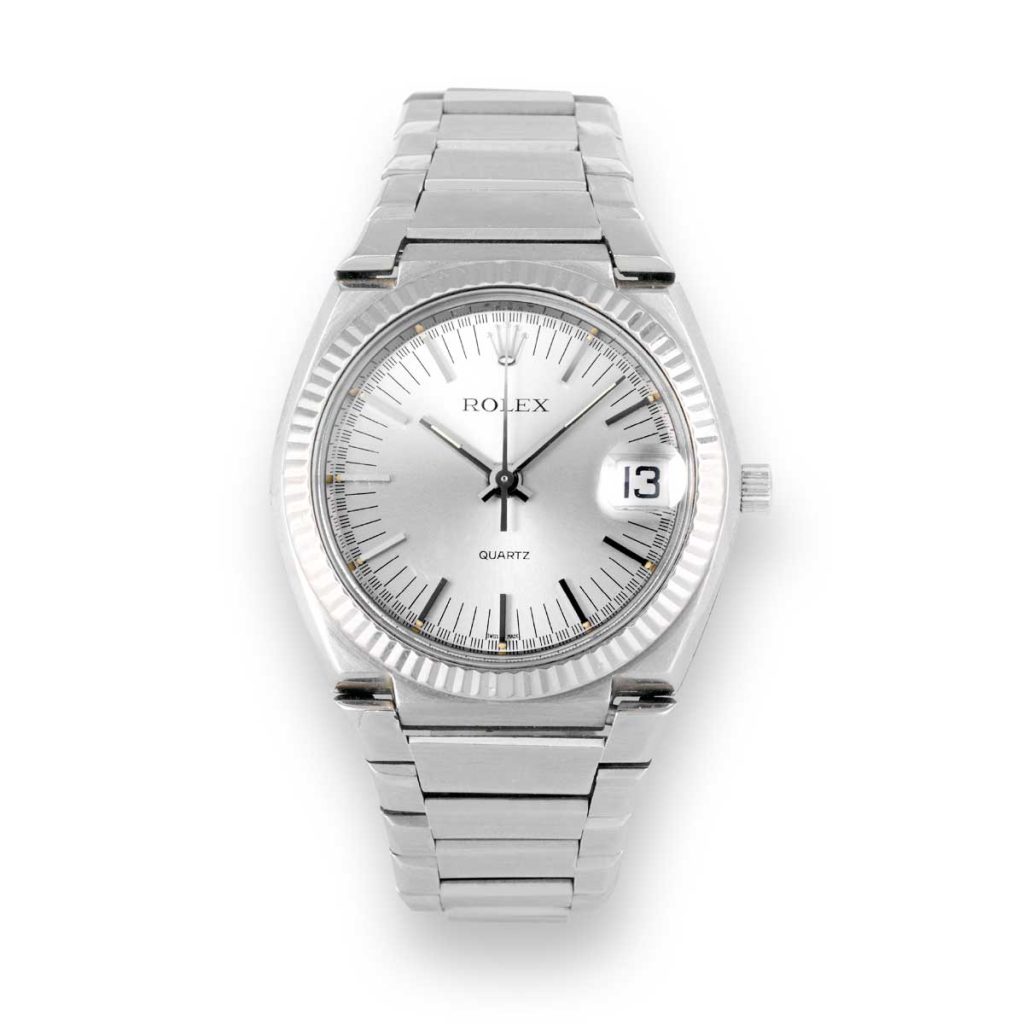
The Rolex Quartz 5100 in 18K white gold powered by the Beta 21 movement (Image: antiquorum.swiss)

The Rolex Quartz 5100 in 18K yellow gold powered by the Beta 21 movement (Image: antiquorum.swiss)
Rolex actually tested their case on the market in 1974 with the references 1530 (steel) and 1630 (two tone). These watches had mechanical, automatic caliber 1570s in the new integrated case and bracelet design. They were produced in very small numbers, estimated to be around 1500 in total and have now become collectors’ items. In 1977 finally unveiled their new masterpiece — the Oysterquartz.
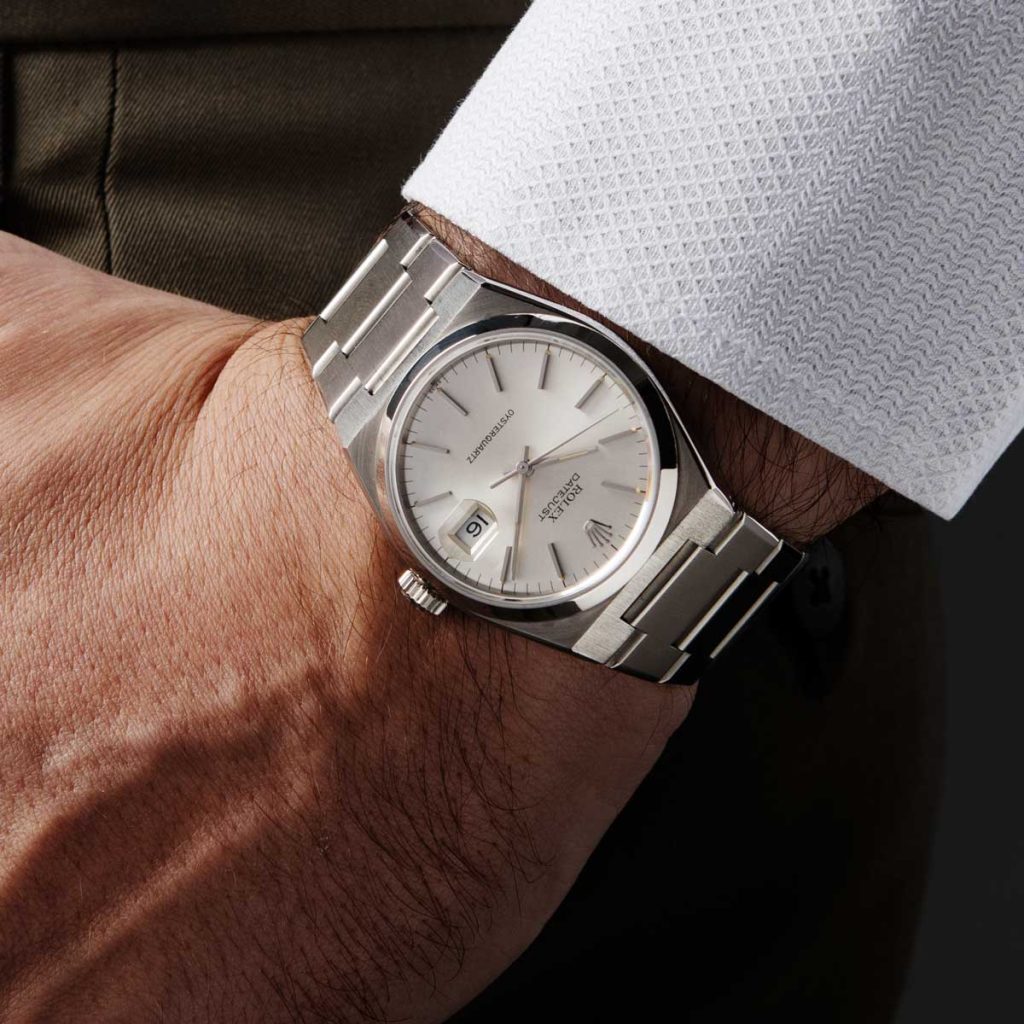
On the wrist, the earliest Rolex Oysterquartz, the Mk1 17000 that had a movement, which had not been sent to COSC (© Revolution)
The finishing was also stunning — maybe more so than their mechanical movements. The movements were able to self-regulate depending on ambient temperature to make them super precise. The movements that were produced in the first 18 months of production weren’t submitted to COSC for chronometer testing and these movements are known as Mk1. The Mk1 watches had a reasonably clean dial layout with simply ROLEX DATEJUST on the top half and OYSTERQUARTZ on the bottom half.
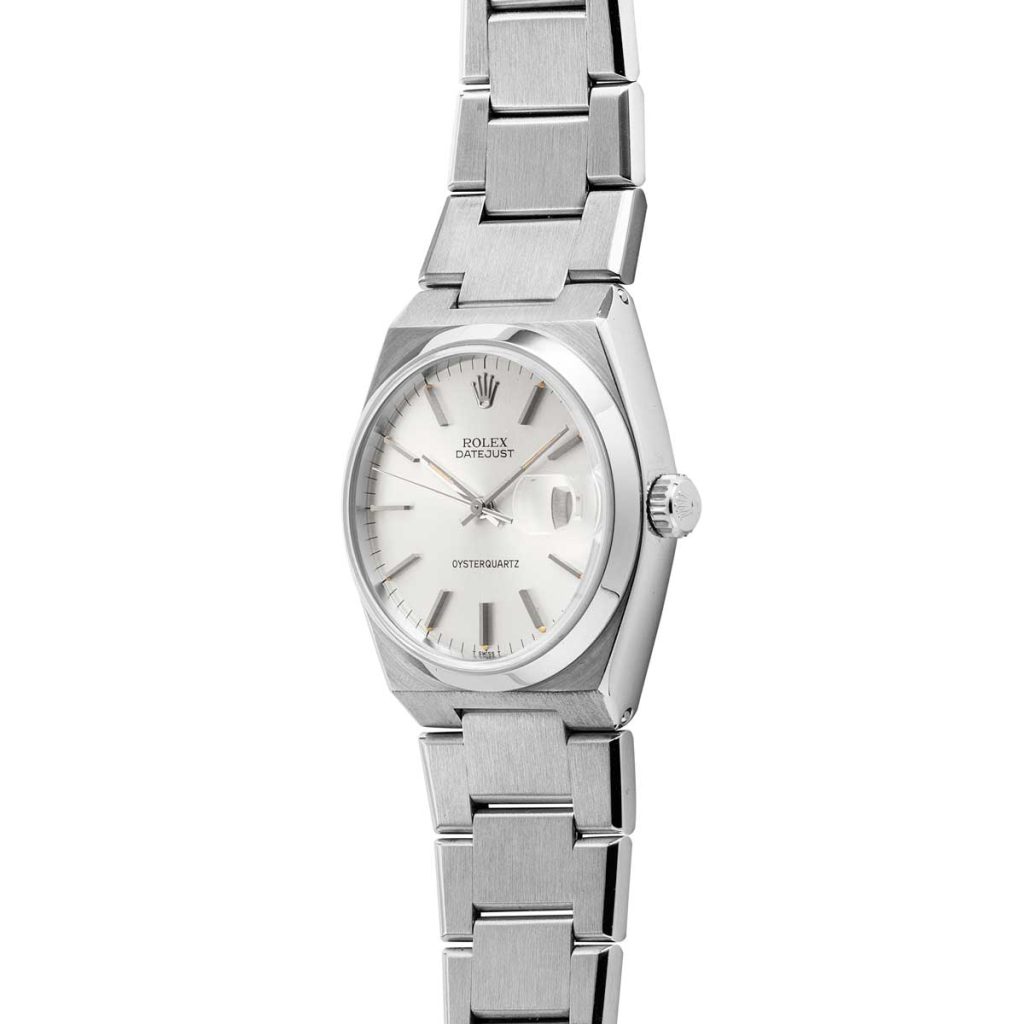
The Mk1 Rolex Oysterquartz 17000's dial very simply reads: ROLEX DATEJUST on the top half and OYSTERQUARTZ on the bottom half (© Revolution)
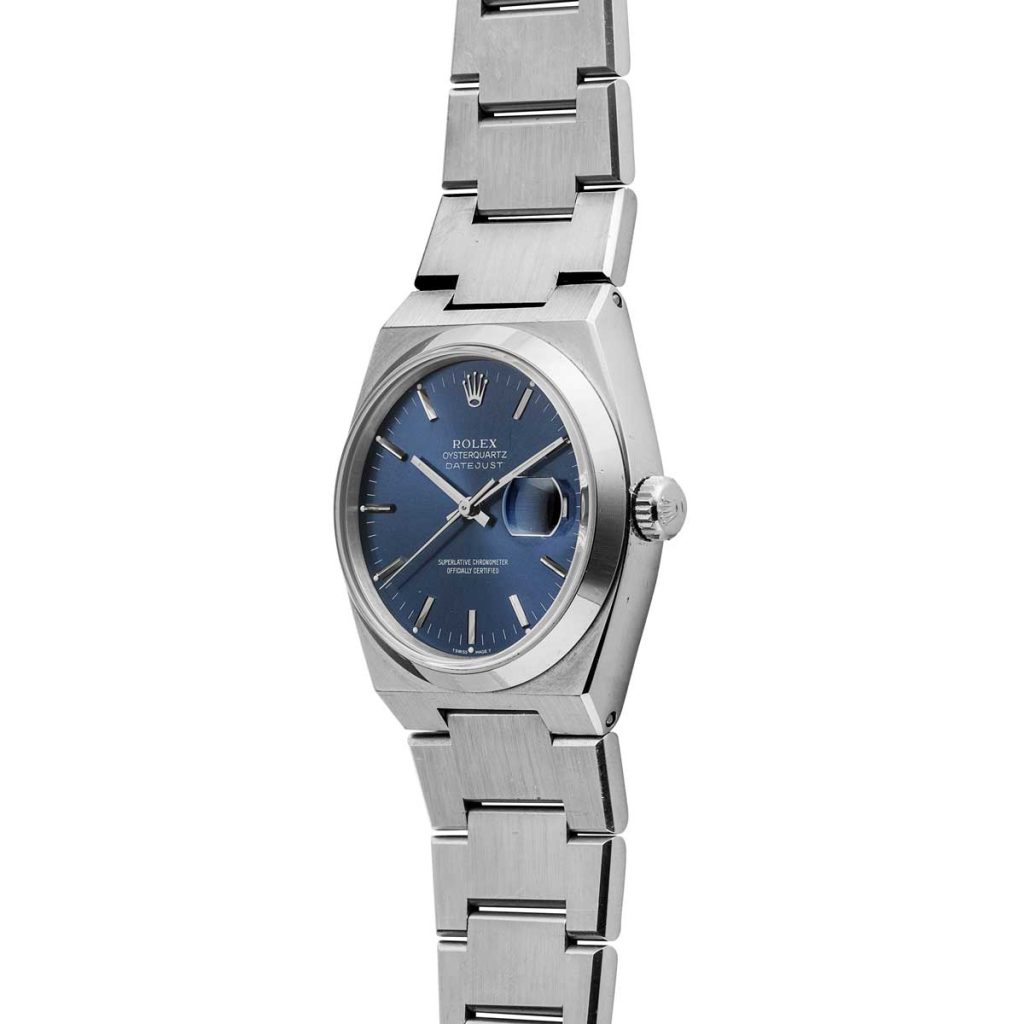
The Mk2 Rolex Oysterquartz 17000's dial reads: ROLEX OYSTERQUARTZ DATEJUST on the top half and SUPERLATIVE CHRONOMETER OFFICIALLY CERTIFIED on the bottom half, because these were fitted with movements that were sent to COSC for certification (© Revolution)
1981 Oysterquartz Datejust Ref. 17000
- 17000 Steel Datejust
- 17013 Steel and Yellow Gold Datejust
- 17014 Steel and White Gold Datejust
- 19018 Yellow Gold Day-Date
- 19019 White Gold Day-Date
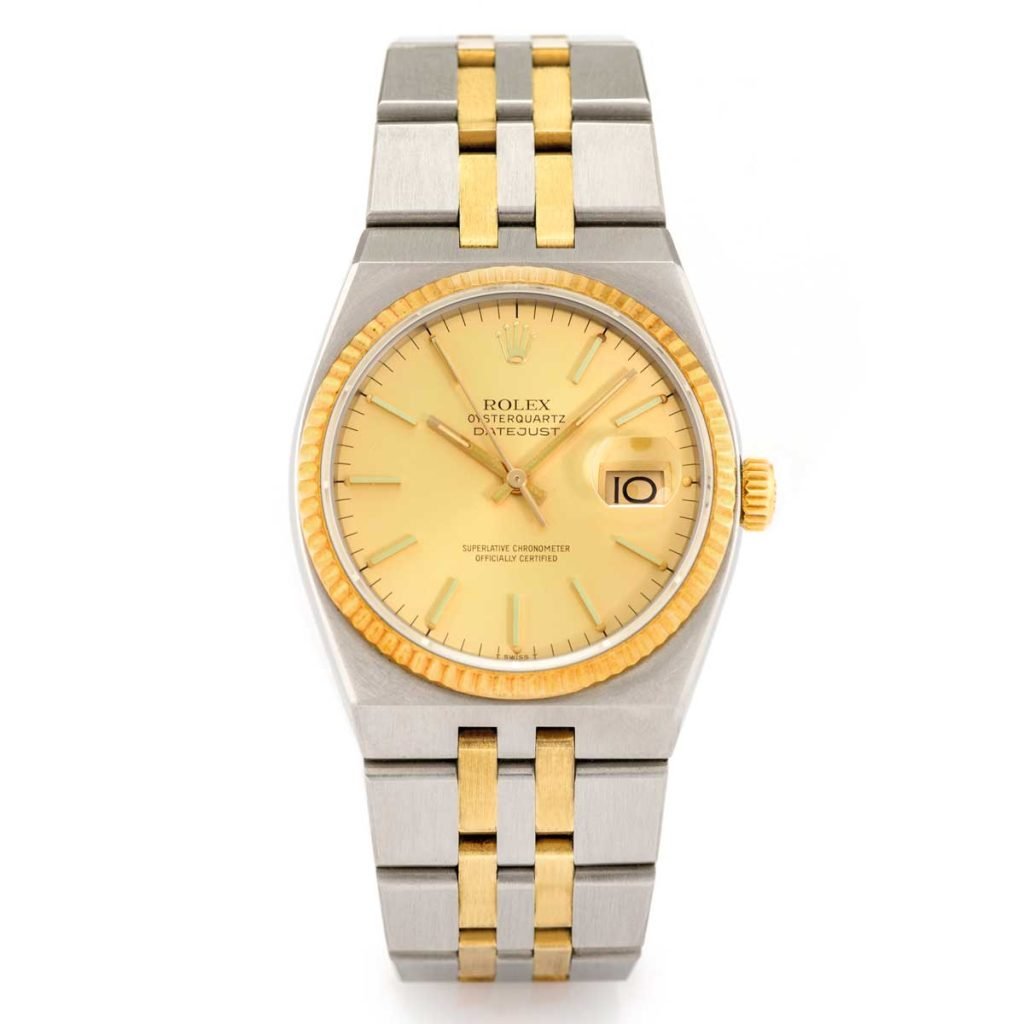
Rolex Oysterquartz - 17013 Steel and Yellow Gold Datejust (Image: antiquorum.swiss)
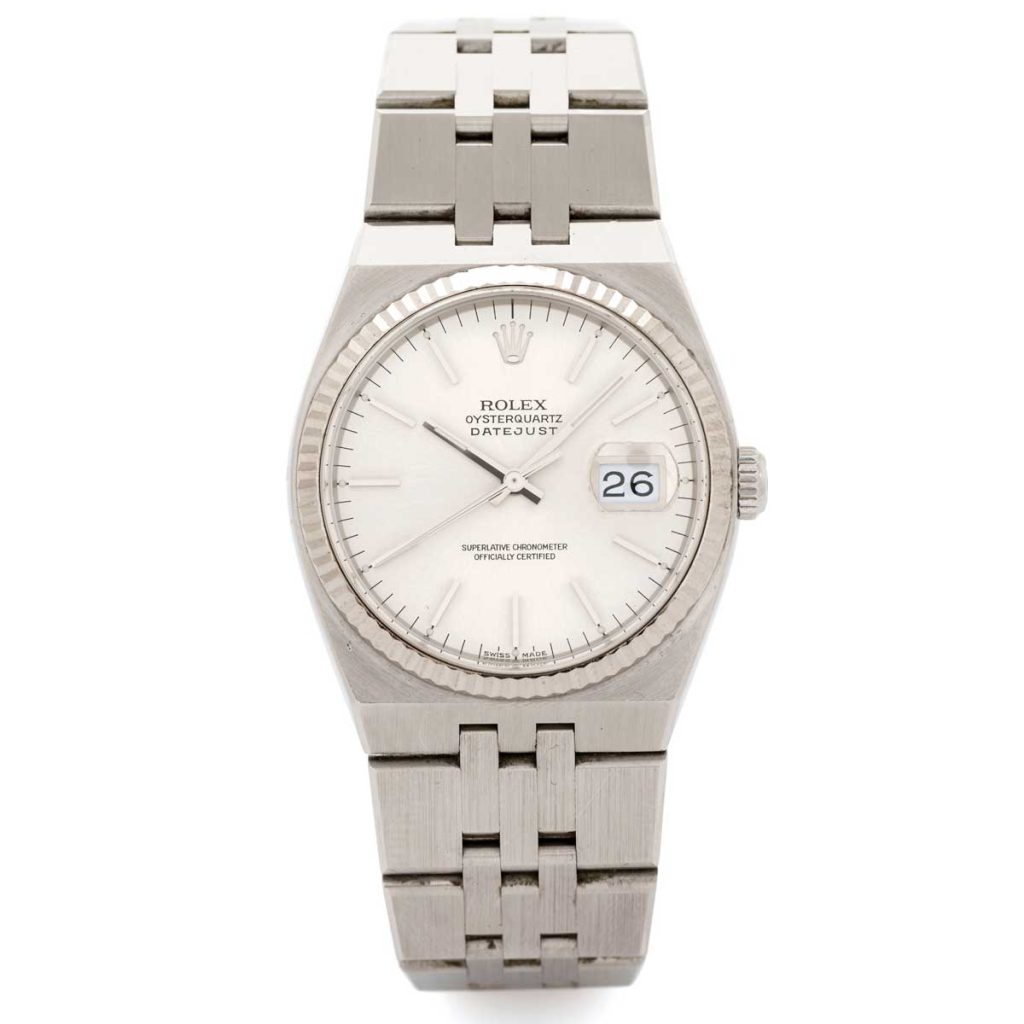
Rolex Oysterquartz - 17014 Steel and White Gold Datejust (Image: antiquorum.swiss)
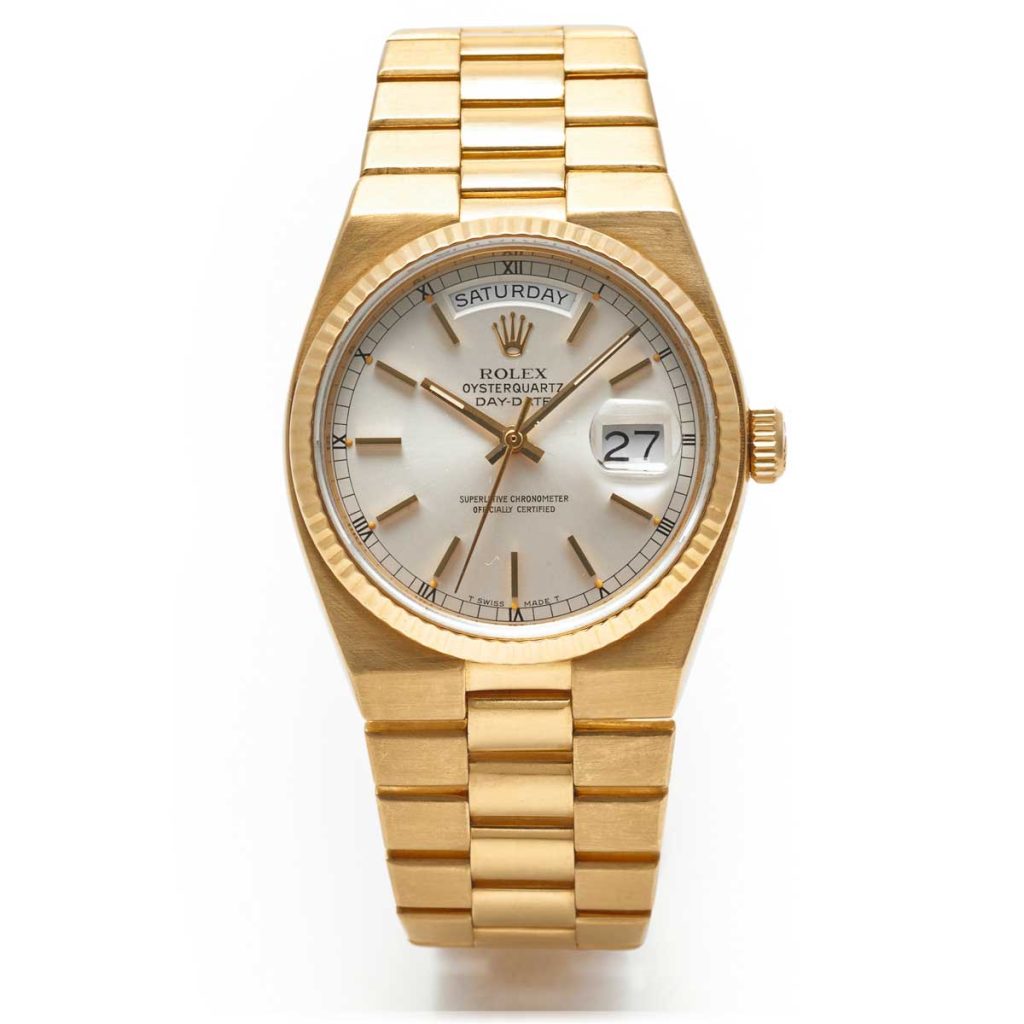
Rolex Oysterquartz - 19018 Yellow Gold Day-Date (Image: antiquorum.swiss)
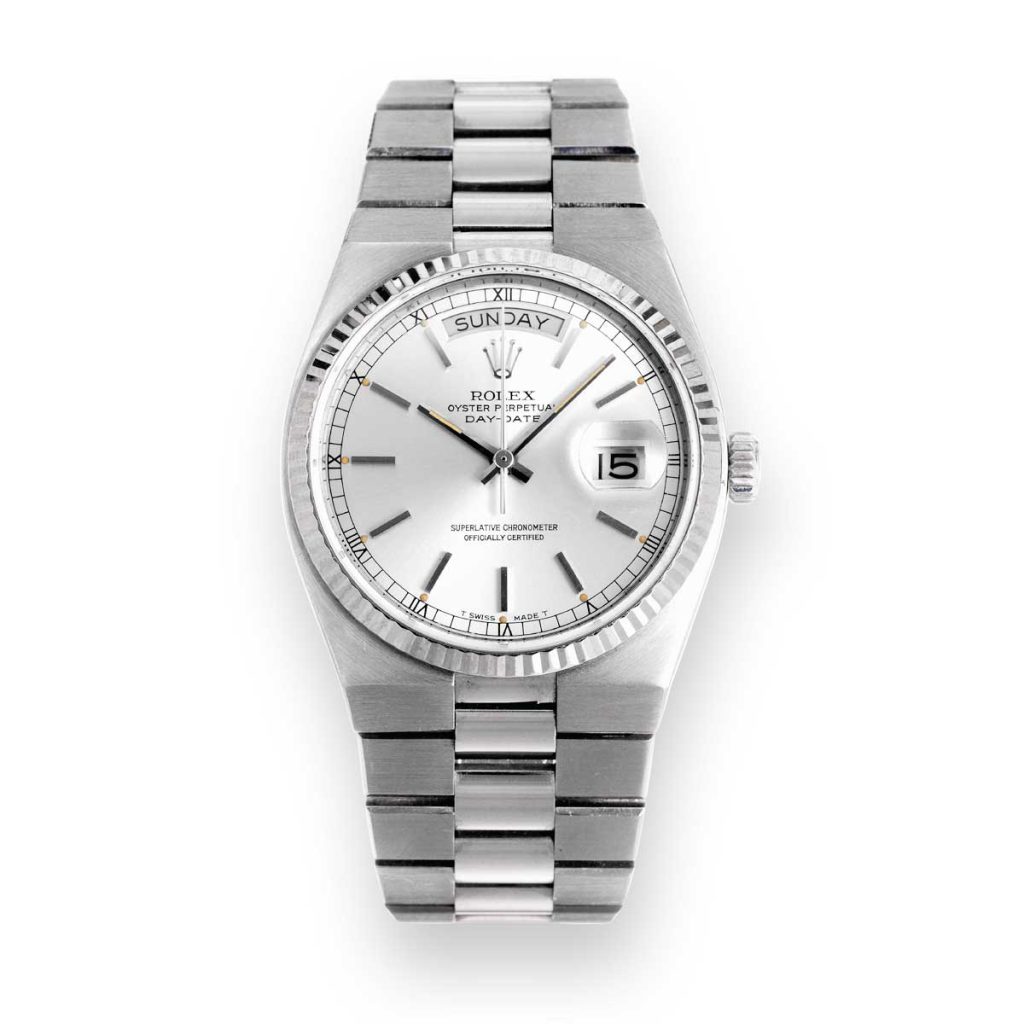
Rolex Oysterquartz - 19019 White Gold Day-Date (Image: antiquorum.swiss)
Both lines had their own movement too. The Datejust was powered by the caliber 5035 and the Day-Date by the 5055. Throughout their run, the Oysterquartz Datejust was produced with quite plain baton hour marker dials in silver, black and blue.
There are some rare versions with Middle Eastern logos on the bottom part of the dial and also some later models had Roman numeral hour markers. Like all precious metal Rolex watches, the gold Day-Dates were produced with special dials and bezels. Dials made from lacquered wood with or without diamond hour markers and sometimes diamond set bezels.
Everything was possible with the master piece Osyterquartz watches. Recently a small number of incredibly rare Oysterquartz have been included in important watch auctions. The Phillips sale thematic sale ‘Glamorous Day-Date’ in May 2015 featured two yellow gold Oysterquartz Day-dates reference 19168. Each featured gem set dials, bezels and bracelets. They are rare, however, and command prices to match!
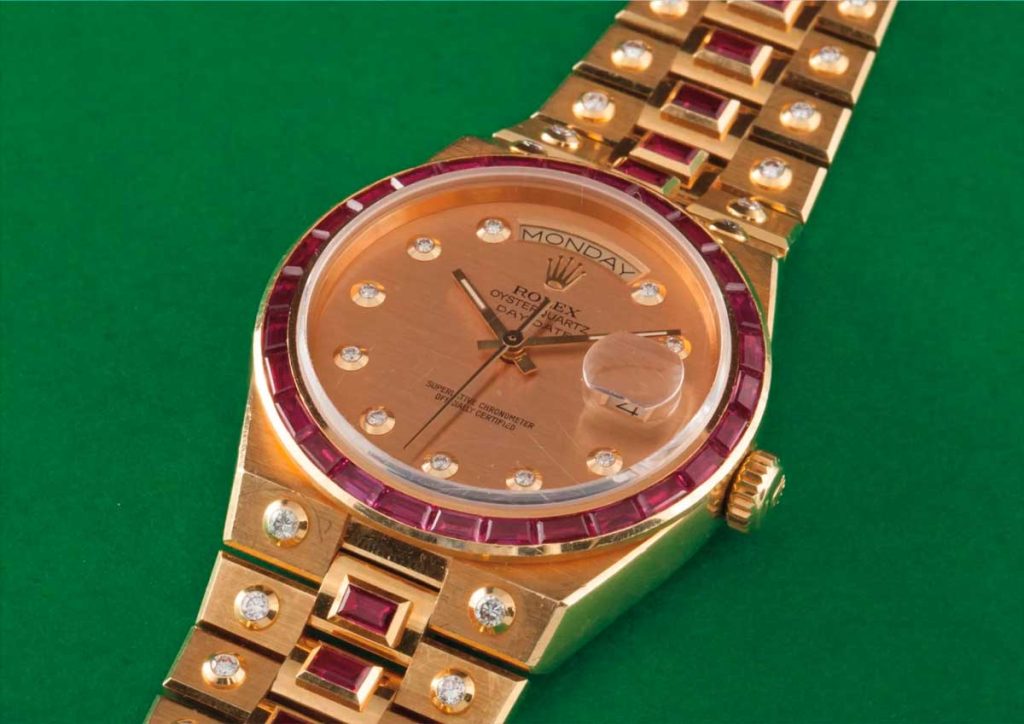
A Rolex Day-Date Oysterquartz ref. 19168 in 18k yellow gold, decorated with diamonds and rubies; sold on 9 May 2015 for CHF110,000 (Image: phillipswatches.com)
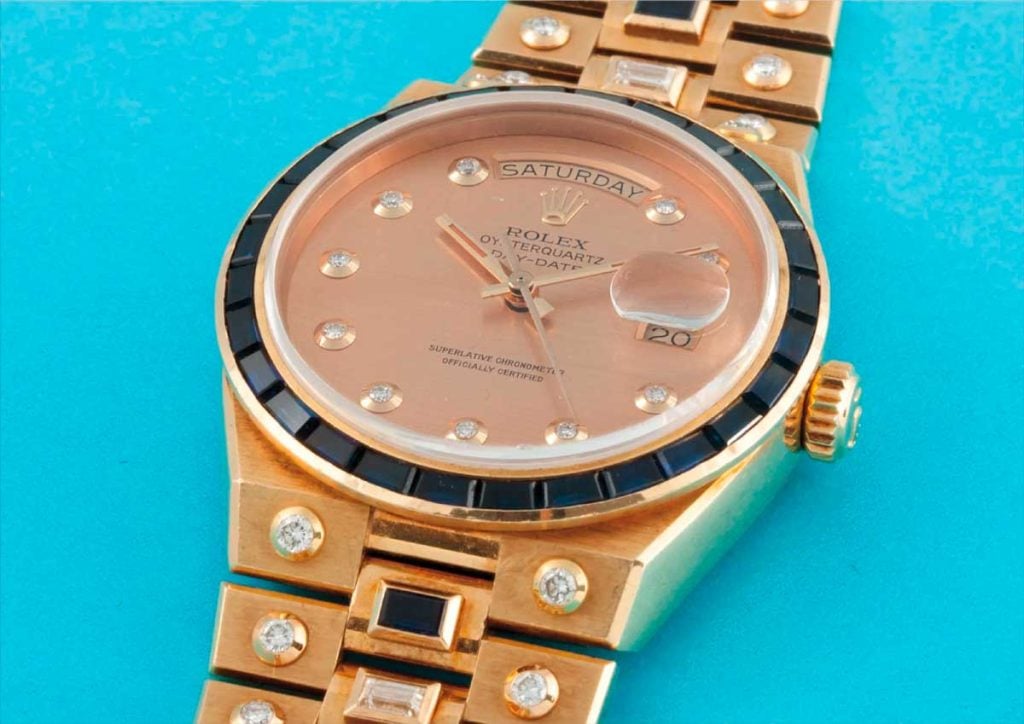
A Rolex Day-Date Oysterquartz ref. 19168 in 18k yellow gold, decorated with diamonds and sapphires; sold on 9 May 2015 for CHF93,750 (Image: phillipswatches.com)










